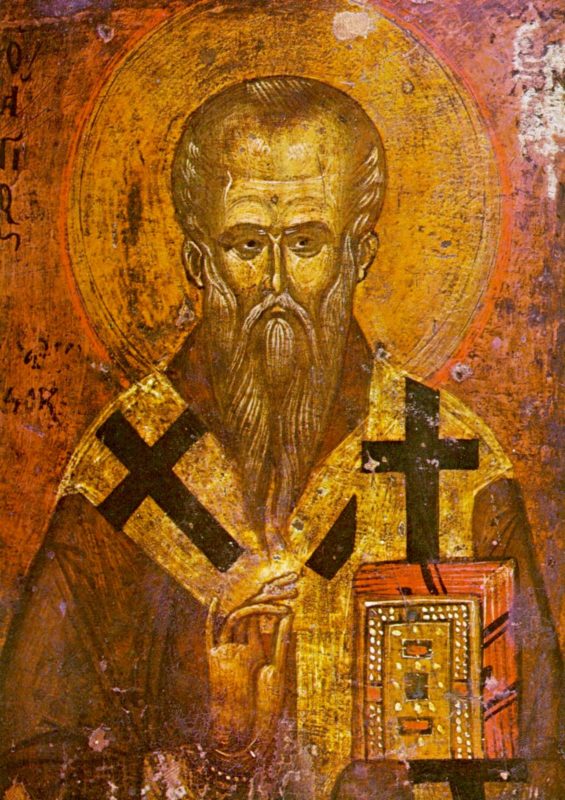The lack of relational thinking in the Catholic tradition is what spurred Fr Kevin Connors to write a thesis about loveableness and the Eucharist.
“What got me started was… the lack of relational thinking in our tradition, when Judaism is so relational. We seem to talk a lot about our catholic identity, yet very little about our catholic relationality. So, I figured that what is needed to get relational thinking more appreciated – at the kernel of tradition – is to treat the Eucharist relationally,” he told NZ Catholic in an interview.
Fr Connors spoke on his thesis, “Phenomenology of the Eucharist: A Reflection on Traditioning”, on August 20, 2019 at St Anne’s Church in Newtown, Wellington.

Fr Connors said he often uses five slogans in his homilies: “I’m the apple of God’s eye. I’m worth the blood of Jesus, I’m infinitely loveable, I’m infinitely loved, I’m the joy of heaven”. I’m also a bit undecided about whether to finish there. Sometimes I also say, “I am the joy of God’s heart”. These sayings are a kind of manifesto on the doctrine of loveableness.
Loveableness
“My thesis is about how loveableness is the cornerstone of theology and the source of meaning. To go into ‘loveableness’ in depth is to recognize that loveableness is the passive yet positive element in the love relationship,” Fr Connors explained. “It is the loveableness of the other that generates relationship. Otherwise love would not be relational at all.”
“If it was my lovingness rather than your loveableness that defined relationship there would not actually be any relationship. There would only be invincible self-expression. It is your loveableness that guides my love in a relational direction. You are not only loved because I love you. I love you because you are loveable. You are inspiringly loveable. But you didn’t make yourself loveable. You were born that way. So was I. The crucial characteristic of loveableness is that it commands relationship,” he further explained.
Mother and baby
He said Clement of Alexandria helped us apply the idea of loveableness to the Eucharist. His writings provide the model of an infant and mother.
“They present God as mother and the word of God as the breast of God, the blood of Christ is treated as the milk that flows from the breast of God, for us infants. Clement cries out: ‘we must claim our infancy!’ Through his model, the parent-lover gives life to the infant-beloved. The infant-beloved gives love to the parent-lover,” Fr Connors said.
Following St. Clement, Fr Connors said we find that the two-way dynamic of the relator and the related-to is clearly demonstrated in breast-feeding.

“While drinking her/his mother’s milk the infant’s saliva enters the mother’s body. The saliva carries information that adjusts the mother’s expression of milk for the baby’s most suitable nutrition at the next feed. In this dynamic relationship it is not only the baby’s body that is changed by the mother. The mother’s body is also changed by the baby. Intentionally, the mother finds the baby passive to her influence. But unintentionally, the mother is also passive to the baby’s influence. The mother is the relator the baby is the related-to, but then the mother becomes the related-to of the related-to. This is relational passivity, even suffering for the other,” he said.
Similarly, he said, the Eucharist is established through this kind of retro-active passivity.
“It involves a passivity that, for the sake of relationship, is led forth in a way of suffering. We and Christ suffer and are changed by the needs of the ones we love. Christ’s is changed for us. He suffers to the point of death for the sake of his relationship with us. But relationship and the relationality of the self, is not shut down at the moment of death. It opens up,” Fr Connors said.
“The meaning of the word “suffering” must be recognized for more than the sense that it causes pain. It also has a seldom acknowledged sense of being under the influence of an overwhelming force. Such a force can be positive as well as negative. Pleasant as well as painful. Therefore, it is possible to suffer the resurrection, ie, it is possible to become, passively, through the resurrection. It is possible ‘to be raised up’,” he went on to say.
“Therefore, through his death, the body and blood of the word made flesh expressed, or communicated, resurrection. Through the Eucharist the word made flesh speaks again. It declares, ‘I have suffered and changed for you. Therefore, here I am for you’. The Eucharist immerses us in the relationality of Christ’s body. Thomas Aquinas calls transubstantiation ‘a change more miraculous than any other change.’ He considered it an even greater change than the creation of the world. It is relationship, the relationality of love, that causes the greatest of all changes. The Eucharist is the relationality of Christ’s body, in which we live and move and have our being-for-one-another.”
Relationship over identity
But how do we prioritise relationship when we have prioritized identity for so long? Phenomenology is the study of how meanings arise in the world. How does the meaning of silence arise? The meaning of being? The meaning of relationship? The meaning of the Eucharist? etc…? A basic fact that emerges through phenomenological studies is that phenomenology reveals that meanings arise through relationships. Languages arise through relationships, communication.
Relationality itself is reliant on the difference between a relator and a related to.
“In terms of phenomenology, my thesis criticises the fact that we habitually think and decide through the mind of the relator rather than the related-to. We claim our powerful being and relate. We don’t claim our weak infancy and allow ourselves to be related to. Yet Paul reminds us: ‘when I am weak, I am strong’. My weakness (as related to) invokes the strength of God who relates to me. His thesis was drawn from the wisdom of Jewish philosophers like Emmanuel Levinas as well as theologians, most notably, St Thomas Aquinas,” Fr Connors said.
“The way the thesis the thesis dawned on me was, in 2005, I was preparing for the Eucharist for the second Sunday of Lent which is Transfiguration Sunday. The Gospel gives us the Father’s word to Jesus: ‘this is my son, my beloved and my chosen. Therefore, Luke, in this passage, is probably meant to bring baptism to mind’ the baptism and the transfiguration of Jesus show that Jesus is unconditionally loveable and his loveableness moves the Father to pour out his Holy Spirit on Jesus and rejoice in him. in his [Jesus] loveableness. In 2017, I found a quote from Thomas Aquinas in which he says, ‘The good is loveable to itself’.”
Fr Connors called it an extremely radical piece of writing.
“This writing, from late in the life of St Thomas, is extremely radical’,” he said, “because in it, although [Aquinas] avoids saying the unmoved mover is moved… he says “the lover is moved by the beloved”…. and that’s basically my thesis. My thesis is that the loveableness of the beloved moves God. In other words, our loveableness brings God out of heaven; or, the loveableness of humanity becomes God’s new heaven.”
Eucharist as earth and history based
But how has the Church lost its emphasis on the heavenly loveableness of earthly humanity?
“When we look at the history of the Eucharist, we see that it has two origins: a heavenly, “bread of heaven” origin and an earthly, last supper origin. About 200 c.e. Clement spoke of a “divine tradition” and a “tradition of the Lord”; – which he distinguished sharply from the historical “canon of the Church” and “canon of tradition”. The former kind of tradition was heavenly and spiritual while the latter was earthly,” Fr Connors said.
“But about 250 c.e., Cyprian of Carthage responded to the question: is it permissible to use water rather than wine in the eucharistic chalice? His was ‘no’. Clement had also given this answer a few decades earlier. But Cyprian took Clement’s expression ‘tradition of the Lord’ and applied it to what Clement called ‘the canon of the Church’,” he recounted.
“By doing this he took an expression ‘tradition of the Lord’, which applied through multiple horizons (especially a heavenly transcendent horizon) and reduced to one historical horizon. Since then the Church has failed to sustain a maranatha (“come Lord Jesus”) sense of the Eucharist. The sense of a divinely given relationship which fills the earth with heaven, has been replaced by the sense of a humanly sustained work which goes from earth to heaven (do this in the ’historical’ memory of me).”
“Therefore,” Fr Connors said, “St Cyprian’s historical treatment of the Eucharist failed to communicate the martyrs’ heavenly sense of the Eucharist.
“In his description of the Sacrament, he reduced his multi-horizon sense of the Eucharist to a kind of historical institutional horizon. He didn’t succeed in passing on what he intuited. And so, we’re left with an unbalanced historical institutional emphasis on the Eucharist rather than a sort of mystical eternal emphasis which was the emphasis that the first century Christians provided,” he said.
Fr Connors said the appreciation of the Eucharist became more earth and history based.
In his thesis, he talked about communication being informational as well as performative. Theology, he said, had been done a lot in informative or referential language rather than relational language.
“It’s the diminishing of the relational horizons in which we have traditioned the Eucharist. The diminishing of those relational horizons has also meant the diminishing [the Eucharist’s] communicative sense and it’s relationship-building sense,” he explained.
“It’s based on us going from earth to heaven rather than God coming from heaven to meet us. Our Eucharist have a strong tendency of being food for the journey on our pilgrimage towards heaven, rather than the gift of heaven come into our midst,” he explained.
Fr Connors said the relationality of the Eucharist is heaven.
“What I’m saying which leads to a deeper reflection is that we attract God from heaven to us, or God’s heaven is us,” he said.
Loveableness forgotten
Fr Connors said by the end of the New Testament era, we had almost forgotten our sense of loveableness.
He said while Jewish thinking starts with the premise of a sanctified people chosen because they were loved, Christianity, as it became Gentile, “lost that holy ground, it started with the premise that we are not holy, rather than we are holy and that holiness is saved by relationship”.
He said our thinking is based on the idea that we are unloveable.
“If I start with the premise that I’m loveable, then it’s not selfish to want to be loved. But if I start with the premise that I am not loveable, it is selfish to want to be loved,” Fr Connors explained.
He quoted Jeremiah 31:20 which he said “expresses it with particular clarity and depth. ― ‘Is Ephraim my dear son? Is he a delightful child? Indeed, as often as I have spoken against him I certainly still remember him and so my bowels are trouble within me’.”
Fr Connors said being loveable is illustrated by the love of a mother for her child.
“It seems to me that if I were a mother, I would be thinking about what it means for my child to be related to, that would be very important to me, that the child experiences being loved. And I would be thinking about what it means to me to be the related to of the related to, the one through whom my child receives the sense of being loved. That is the kind of maternal depths of God, that is what I was saying about the Father being moved, the lover being moved by the beloved.”
Fr Connors said the reason for the Trinity and creation is God’s desire to be loved.
“This is not selfish. It is because he is infinitely loveable and therefore an infinite blessing. To love the loveable is to be blessed. So, God’s desire to love is God’s desire to give himself as blessing. God’s desire to be loved is the same as God’s desire to bless because it’s a blessing to love the loveable,” he said.
The same can be said of the Eucharist. Bread and wine, which are finitely loveable, become the body and blood of Jesus. This is infinitely loveable. The Eucharist is the arrival of infinite loveableness among us. Then it is not only the end and fulfillment of our destiny but also the hidden and infinite beginning of our joy. In the Eucharist we join with God and Jesus to celebrate the infinite loveableness of the human person.’

A thoughtful and welcome read. Reminded to go back and read St Athanasius and St Augustine on the Trinity.
It would be interesting for the author in future to expand on:
1. the loveableness of humans based on creation in God’s image.
2. the limits of analogy between human love and divine love.
3. the corruption of human lovableness and human relationship from original sin compared to perfect divine relationship.
3. the immutability/unchanging nature of God.
Thanks